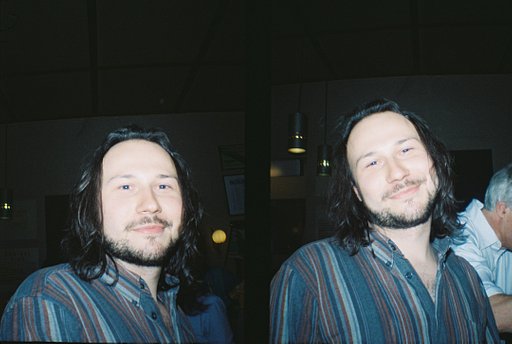What are the different types of photographic film processing?
There are three common types of development processes in film photography. These are C-41, E-6 and B&W, which correspond to the three main types of films, color negative, color positive (color reversal/slide film) and black and white, respectively.
C-41 is the most common process and is used to develop most color films. It produces negative images, so the colors are reversed on the film. The darkest spots on the negative will appear light and vice-versa. C-41 was introduced by Kodak in 1972 and several other lesser-used names are used for the same process including CN-16 by Fuji, CNK-4 by Konica, and AP-70 by AGFA. Most labs will process color negative film quickly and at reasonable cost.
E-6 is the process that is used to develop color positive film, also known as reversal or slide film. Although, like C-41, it also produces color images the results are vastly different due to the different chemical processes. It is a less common process these days and is not offered by all labs.
The black and white process is, as the name suggests, the process used to develop black and white films. Like C-41 it produces negative images. Out of these three main types of processing B&W is by far the most simple and so it is a popular choice for anyone beginning to self develop at home.
Using the wrong kind of processing for the film you use (for example developing color negative film in E-6 chemicals) is known as cross processing and is a popular experimental technique in the Lomography community due to the exciting and unexpected results it can produce.
Anything missing?
Can’t find an answer to your question? Or do you have some useful advice to add to one of our courses? We want to build the world’s largest analogue learning space, so please send any further requests or information to school@lomography.com and we’ll take a look!
More Courses
-
What are the different photographic film formats?
The three main types of film format are 35 mm, medium format and large format. More unusual formats also exist such as 110 and 127.
-
What is tungsten film?
Most standard films are daylight-balanced, so they tend to capture the yellow-orange cast from tungsten lights. To address this, tungsten film was created to produce color-correct images taken under artificial lighting.
-
What is 126 film?
126 film was launched by Kodak in 1963 as a way to simplify the process of loading and unloading film into cameras. Its name comes from the negatives’ dimension of 26.5 mm square. Although companies ceased mass production of 126 format around 2007 to 2008, its cartridge is still known and loved today.
-
What is APS film?
Advanced Photo System or APS film was introduced in 1996 as a “high-tech” or modern alternative to the 126 and 110 film formats. It was 24 mm wide and it introduced many innovations, like the ability to choose exposure lengths and print sizes. Production of new APS film was ceased in 2011.
-
What is the difference between panchromatic and orthochromatic film?
Orthochromatic film is made with blue-sensitive silver halide crystals, while panchromatic film adds other chemicals to increase the film’s sensitivity into the green and red parts of the spectrum.
-
What is a half-frame film camera?
Half-frame cameras shoot 18×24 mm photographs on 35 mm film. This means you can take up to 72 images on one single roll and save a lot of film!
-
What are LomoChrome films?
LomoChrome is the name given to Lomography’s experimental film stocks. There are currently four LomoChrome film stocks available: LomoChrome Purple, LomoChrome Turquoise, LomoChrome Metropolis, and LomoChrome Color ‘92.
-
Where to get film developed?
There are a lot of places that can process and develop your 35 mm color negative film such as local drugstores or one-hour photo labs.
-
What is the processing method for Redscale and LomoChrome films?
All Lomography color films are processed using C-41 chemicals. This includes Lomography RedScale XR and our popular range of color-shifting LomoChrome films – LomoChrome Purple, LomoChrome Metropolis and LomoChrome Turquoise





